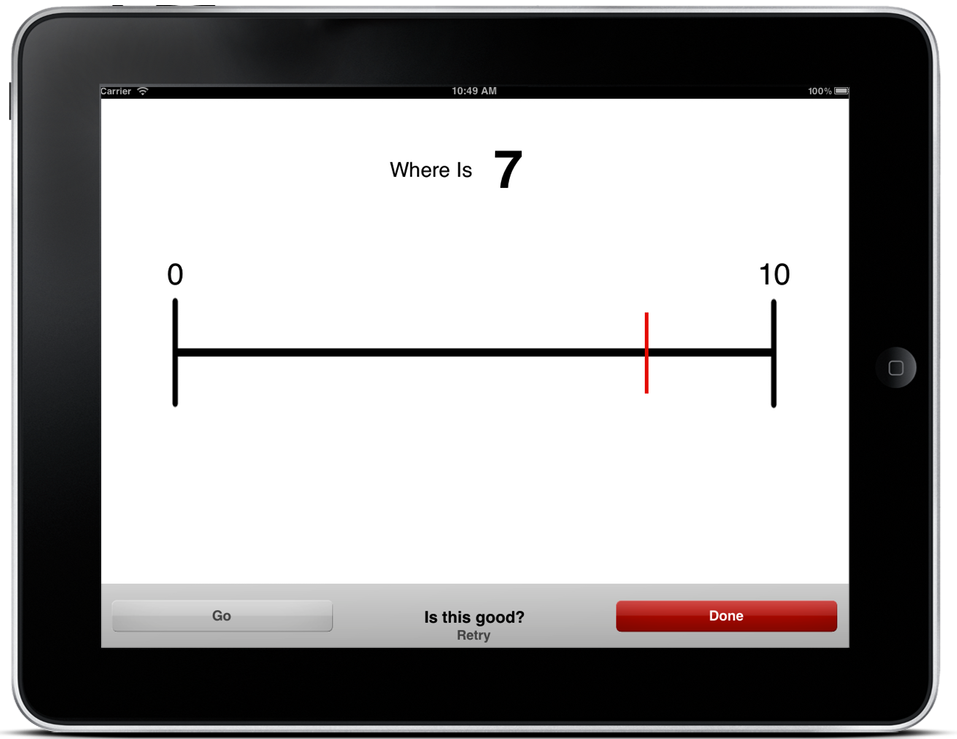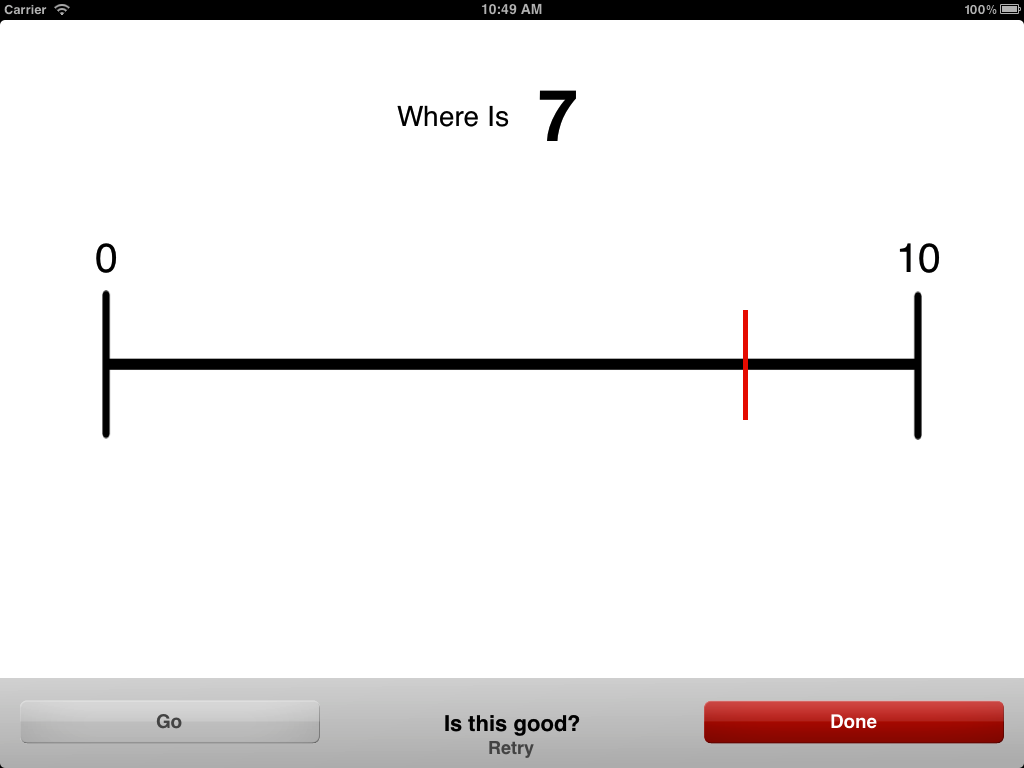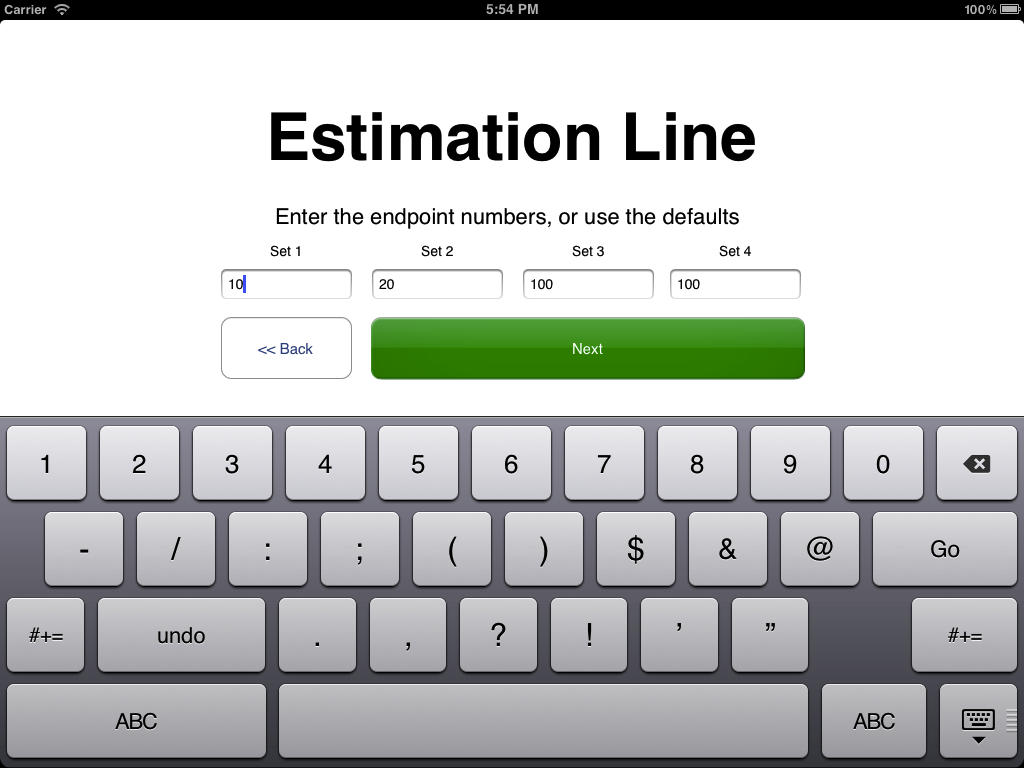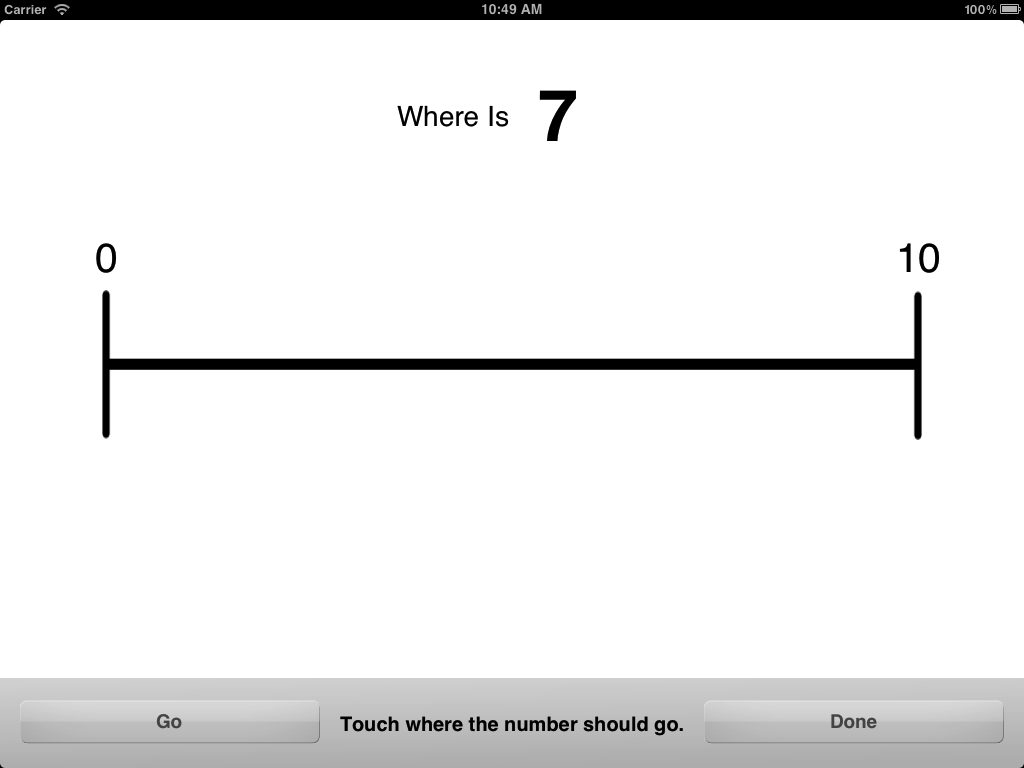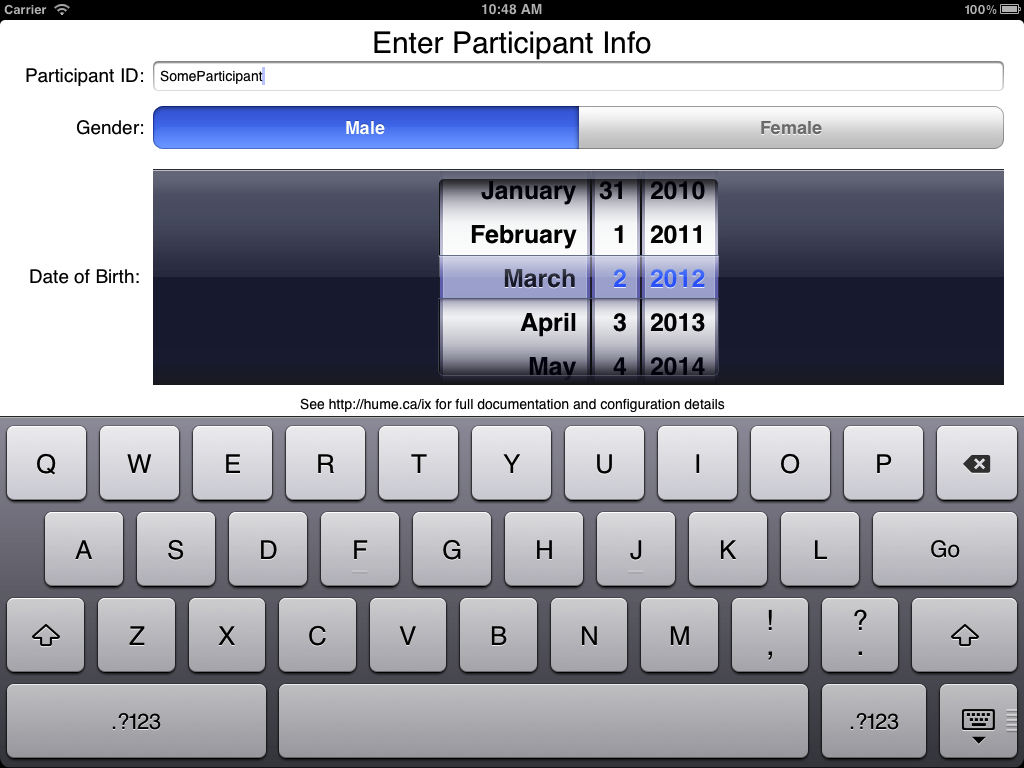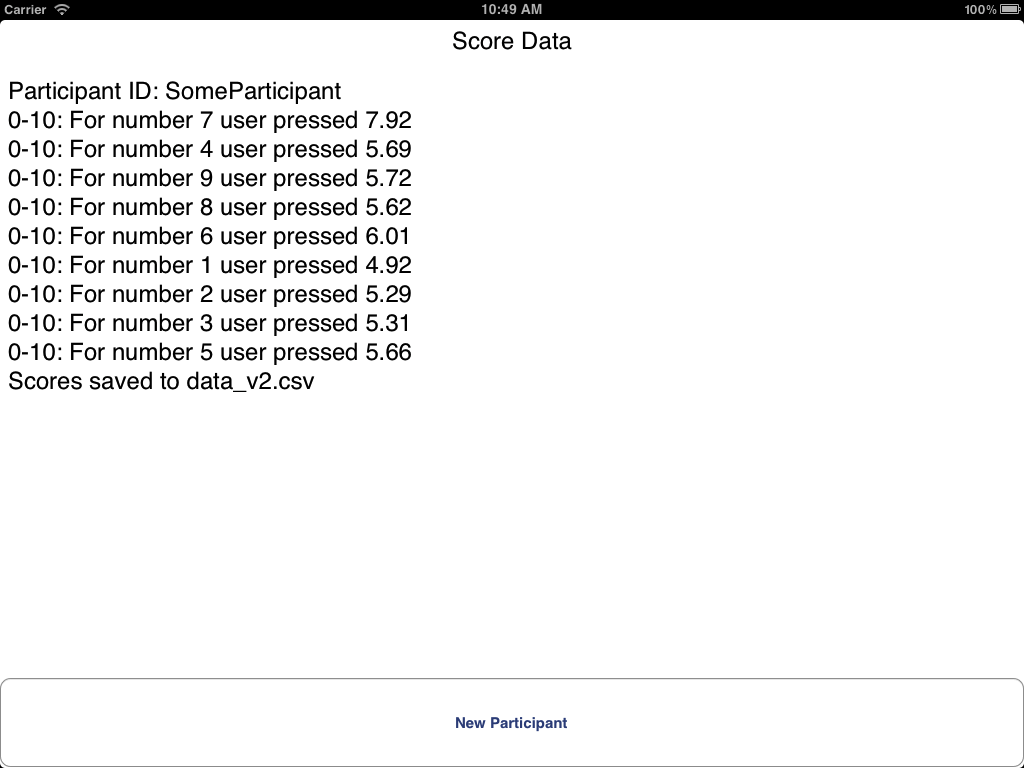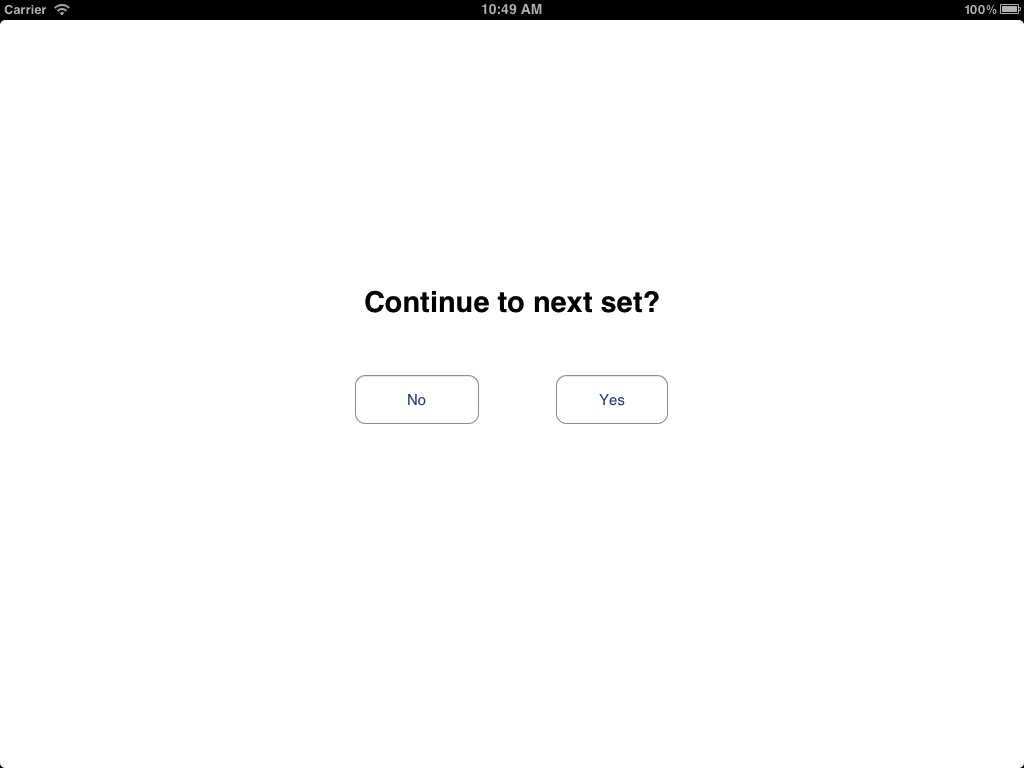Stimuli and Sets
The app shows four configurable sets of target stimuli. Each set has two configurable aspects: a single endpoint for the entire set, and the group of target or stimuli numbers that will be shown as trials in the set. After each set of trials for a particular endpoint,, an option to continue to the next set is displayed for the experimenter, so that the number of sets can be adjusted for each child, based on either a predetermined design or on the child's performance.The endpoints can be modified for each set and like the stimuli, can also be pre-configured via iTunes.
The stimuli sets provided as app defaults increase in endpoint size, complexity and number of trials. These four sets of default target stimuli were created to cover the full range of development: from the pre-kindergarten children (endpoints of 10) to older grades five and six students (endpoints of 100 and 1000). Each set of stimuli can be modified to meet the experimenter's needs. The app randomly shuffles the target stimuli at the start of each set to randomize the display order of the trials. The end-points of the number lines for each set have default values of 10, 20, 100 and 100. End points can also be modified for each participant session.
